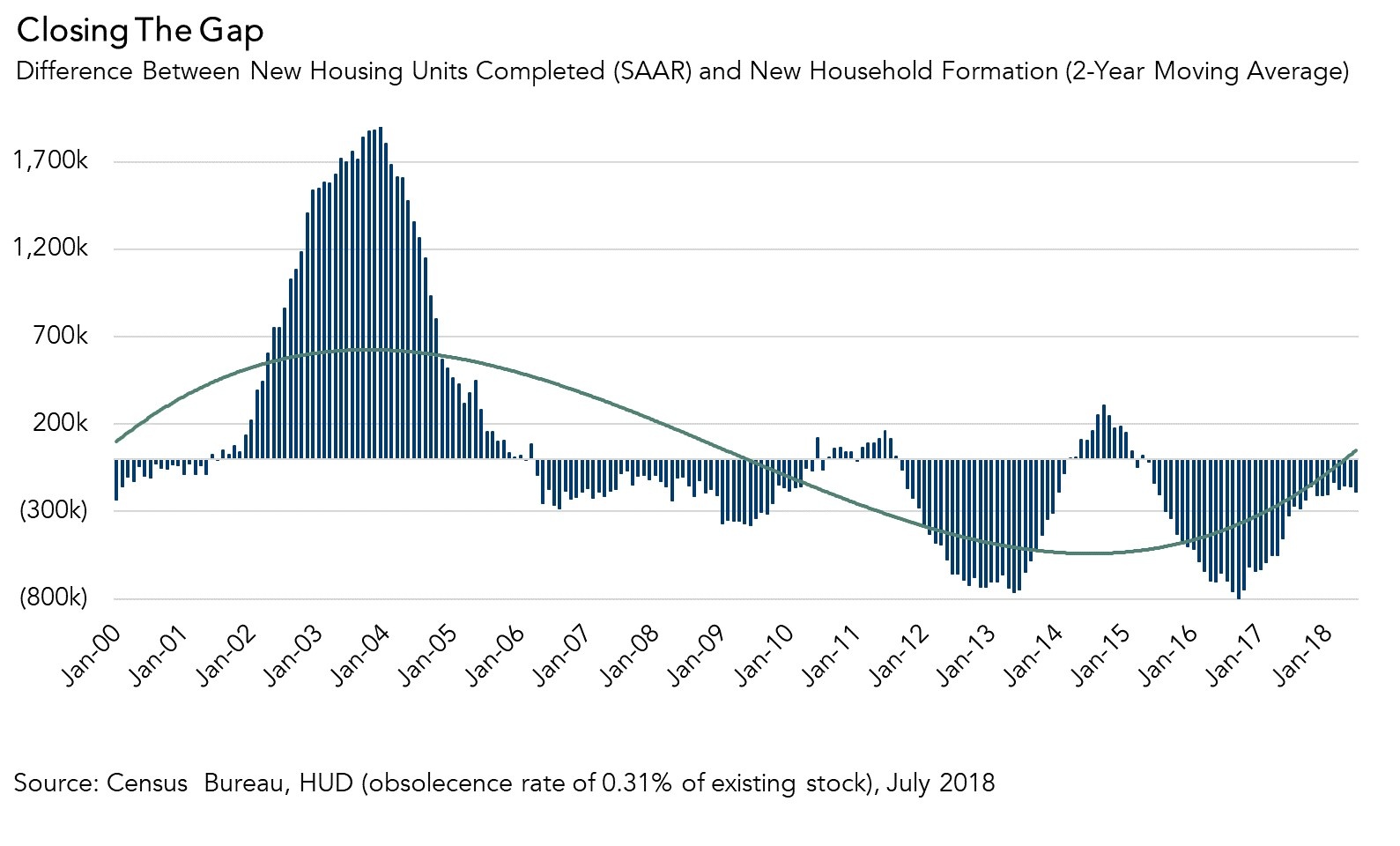The short answer is yes. Home buyers looking for more housing supply to choose from can take heart, as Thursday’s Census Bureau report on housing construction showed builders are starting work on additional housing, inching closer to balancing inventory with demand.
“Home buyers looking for more housing supply to choose from can take heart, as Thursday’s Census Bureau report on housing construction showed builders are starting work on additional housing, inching closer to balancing inventory with demand.”
Despite significant cost headwinds, homebuilders are pushing through new construction projects. In fact, residential building permits increased 4.2 percent since this time last year. Permits for single-family homes increased 1.9 percent compared with the previous month, the largest monthly gain since October of 2017.
The increase in permits is a welcome sign as a strong economy with continuing job and income growth, millennials ageing into homeownership, and baby boomers living longer and more independently than ever, will continue to drive demand and keep the pressure on the housing market.
Starts Trend Positive for Home Buyers Also
In addition to the increase in permits, housing starts in July grew from the previous month for both single-family construction and multifamily construction, which is more good news for home buyers in supply-constrained markets as housing starts are an important indicator of future supply. The Census Bureau report on housing construction showed that housing starts grew 0.9 percent compared with the prior month to a seasonally adjusted annual rate of 1.17 million.
Based on the less volatile three-month moving average, the volume of total residential (single- and multi-family) housing starts is 39,000 less than June 2018, but 44,000 units higher than a year ago.
Completions Drop, But One Month Dip Does Not Reverse Momentum
The pace of housing completions, which represents new net supply added to the housing stock, fell 1.7 percent from June, and 0.8 percent from July 2017. While the pace of housing completions, now at a 1.19 million seasonally adjusted annualized rate (SAAR) fell, it remained near a 3-year low in the gap between housing supply and demand. One month of soft completions data is not enough to reverse the general upswing in new home construction.

An estimated seasonally adjusted annualized rate of 1.19 million housing units were completed in July, representing a 0.8 percent decrease from the July 2017 figure of 1.20 million. Yet, one month of soft completions data is not enough to reverse the general upswing of housing completions. Consider that over the last 12 months, the stock of housing units authorized to be built has increased by 23.2 percent, and the number of housing units under construction has increased by 4.8 percent.
Further increases in housing construction may be on the way as well. Residential construction jobs increased 6.5 percent between July 2017 and July 2018. More people at work in residential construction signals that housing construction is likely to increase in the months ahead, reinforcing reports that builder confidence remains high, even in the face of cost challenges.
What Insight Does Monthly Housing Start Data Provide?
Housing starts data reports the number of housing units on which construction has been started in the month reported, providing a gauge of future real estate supply levels. The source of monthly housing starts data is the “New Residential Construction Report” issued by the U.S. Census Bureau jointly with the U.S. Department of Housing and Urban Development (HUD). The data is derived from surveys of homebuilders nationwide, and three metrics are provided: building permits, housing starts and housing completions. Building permits are a leading indicator of housing starts and completions, providing insight into the housing market and overall economic activity in upcoming months. Housing starts reflect the commitment of home builders to new construction, as home builders usually don't start building a house unless they are confident it will sell upon completion. Changes in the pace of housing starts tells us a lot about the future supply of homes available in the housing market. In addition, increase in housing starts can lead to increases in construction employment, which benefits the overall economy. Once the home is completed and sold, it generates revenue for the home builder and other related industries, and is added to the housing stock.



